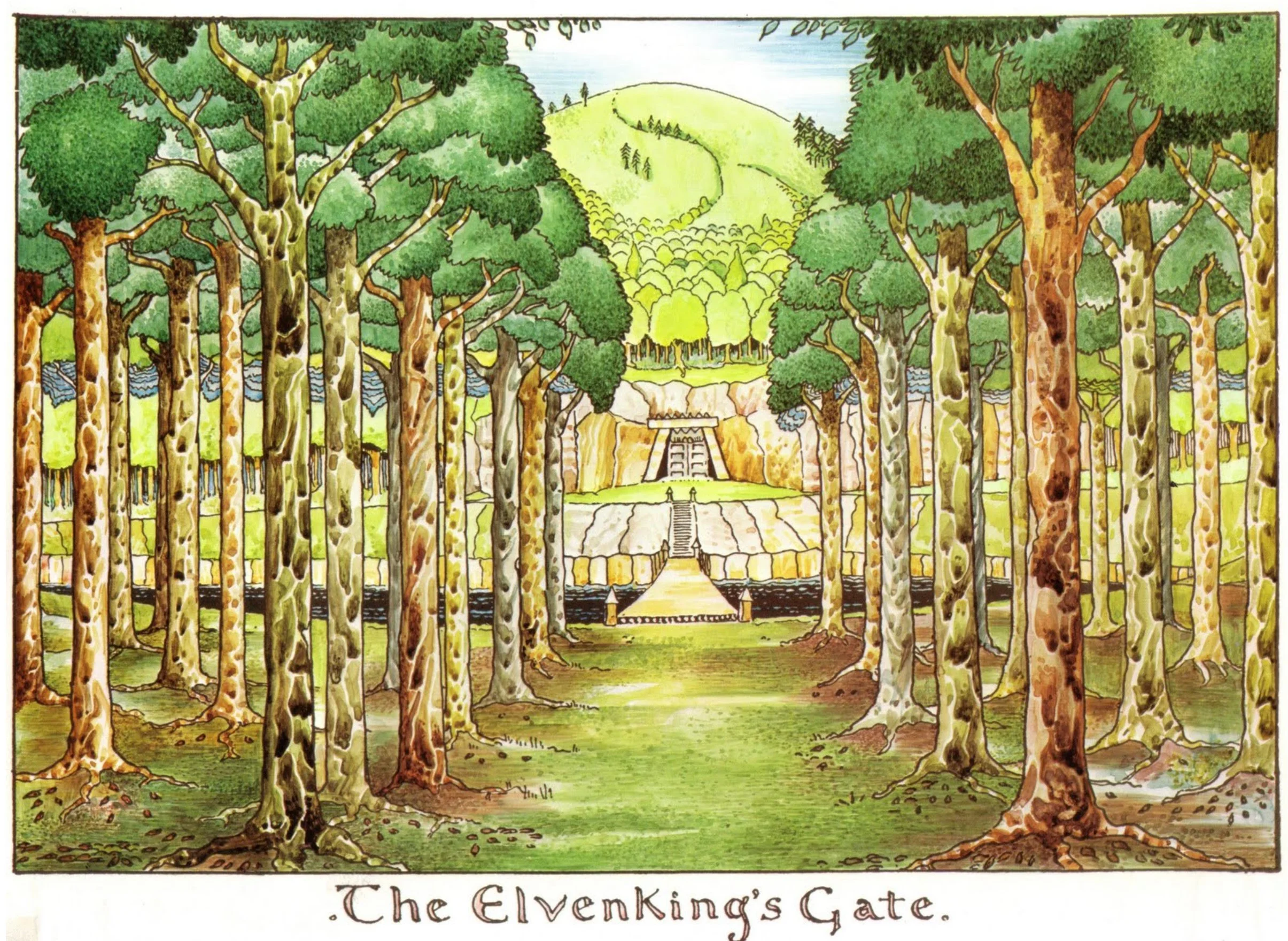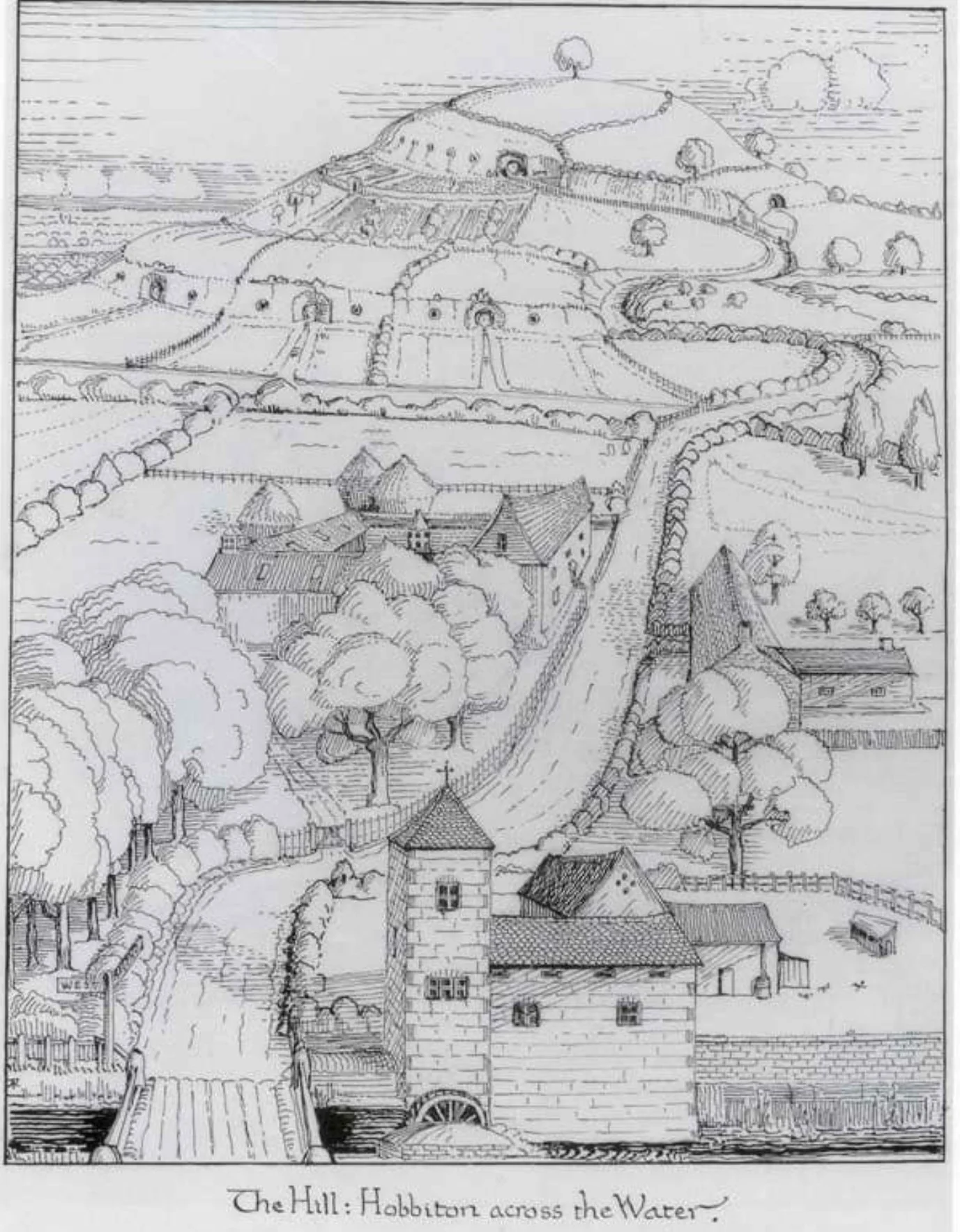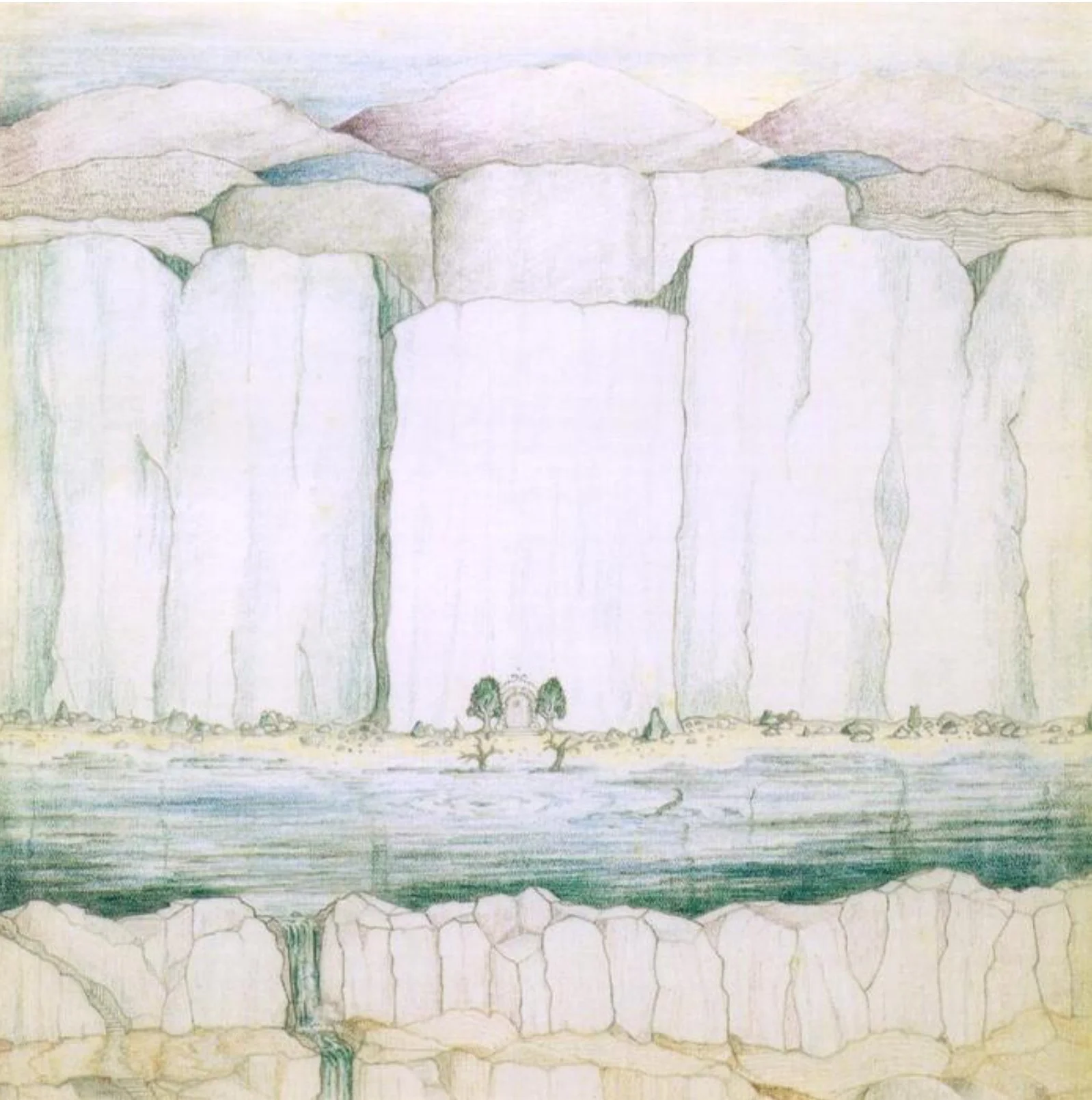Aug 28th 1-2-3: Creating The Lord of the Rings - Slow Writing
Greetings!
For today we will be making a trip back to Middle Earth to discuss what came after The Hobbit.
This would be J.R.R. Tolkien’s Fantasy-Epic, The Lord of the Rings.
What is the story behind The Lord of the Rings?
1: The Story Behind The Story ( 5 minute read )
Illustration by J.R.R. Tolkien
The Hobbit is a success, and readers are chomping at the bit for a follow-up sequel.
Great works of art take time to develop.
A long time.
The year is 1937, and J.R.R. Tolkien’s publisher Allen & Unwin is prompting him to write a sequel due to demand from readers.
Tolkien got to work, and what began as a sequel to The Hobbit became something much larger, complex, and mature.
For one, it was meant to be a child-friendly follow-up to The Hobbit, but Tolkien had developed more of the mythology for the world of Middle Earth since then.
The almost cartoonish nature of The Hobbit had evolved into Elves, Orcs, Creatures, and Characters that carried much heavier and thematically relevant concepts that necessitated more thought.
He begun his process with maps, names and languages, but had since built out diagrams, sketches and illustrations that further fleshed out the world of Middle Earth.
This world now carried ideological depth that The Hobbit did not have.
Dealing with the idea of the One Ring brought about the topic of corrupted omnipotence. This idea cascades naturally into philosophies and legends of evil, fate, resistance and power.
All of this did not happen overnight; it took time to come about.
In fact, Tolkien took almost 17 years to write and publish it.
Illustration by J.R.R. Tolkien
This was due to hitches in the writing process, including false starts, and many, many drafts along with publishing challenges that would draw out the release of the book.
The concept of the One Ring and its bearer took time to take shape as a central plot.
Then, in 1939, World War II happened, and along with it came a demand for attention and a change to daily life in Britain.
In addition, Tolkien’s academic responsibilities as a full-time Oxford professor picked up speed, requiring him to shift his focus to teaching, grading, and other scholastic demands.
Both of these factors were reasons for his first pause in writing.
Fast forward to 1941, and another stall would occur in writing.
Tolkien had written through to Lothlórien and beyond, and then he realized that the narrative needed recalibrating.
Once he returned to writing, his final pause came for about a year from 1943 to 1944.
When he returned, he had newfound clarity and expanded critical chapters such as “The Shadow of the Past” which introduced Saruman, and “The Council of Elrond” which established the quest and the fellowship that would carry out that quest.
Add in even more years of writing and by 1949, his final revisions had been completed.
All that was left to do at this point, was to publish.
This is where even more time would be needed, as The Lord of the Rings would not see store shelves for another 5 years.
The book was supposed to be one continuous narrative, with six books contained within the one volume.
Some of the proposed names for the books were The Ring Sets Out & The Ring Goes South for Books I & II, later The Treason of Isengard & The Ring Goes East, and The War of the Ring & The End of the Third Age.
This was the vision, however releasing during post-war Britain was financially unfeasible due to high printing costs, the post-war paper rationing, and risks tied to production of such a large book.
Add to this the fact that the publisher was expecting modest sales, and The Lord of the Rings was broken up into three separate books.
These would be The Fellowship of the Ring, The Two Towers, and The Return of the King that we know today*.*
Tolkien was discontent with this division of the book.
The Lord of the Rings was one singular story, and breaking it up into separate books was problematic.
He would warn readers of the perceived “shapelessness” of each standalone volume since it was meant to be experienced straight through as one complete story.
“P.S. The book is not of course a ‘trilogy’. That… was a fudge thought necessary for publication, owing to length and cost. There is no real division into 3, nor is any one part intelligible alone.”
In July of 1954, The Fellowship of the Ring was released, followed by The Two Towers and The Return of the King in 1955.
The books launched to mix receptions, with some calling it the greatest works of all time and others calling it juvenile and trash.
One fact would become clear over time; The Lord of the Rings was truly one of the most epic and beautiful masterpieces to ever grace readers’ imaginations.
Complete, one-volume releases would eventually be published, containing the entire story in one book as originally envisioned.
In 2001, Peter Jackson would release a film adaptation of the first book, The Fellowship of the Ring, a landmark in book-to-movie adaptations.
The Two Towers film would be released in 2002, with the conclusion to the film-trilogy being released in 2003 with The Return of the King.
To this day, there are shows, movies, and even post-humorous book releases edited and released from Tolkien’s many manuscripts, maps, illustrations, and numerous notes.
So what are the takeaways from this legendary story and the story behind it?
If you have an idea, let it ride.
Let the idea develop at a natural pace and have fun obsessing over the details.
Take a note from Tolkien, he didn’t rush and neither should you.
Let your imagination guide you.
Illustration by J.R.R. Tolkien
2: Creative Insights From Us
I. Slow down, take time to work on what you are working on, and allow yourself to derive pleasure from the simple act of creating. Work on one project for a long time, you never know what it might turn into.
II. Less of an insight, and more of a recommendation. Read Slow Productivity by Cal Newport. Many of the principles that Tolkien instinctively followed are covered in this book. I have found it to be an immensely useful book for anyone creating art.
3: Inspirational Quotes From J.R.R. Tolkien
I. “I wisely started with a map, and made the story fit (generally with meticulous care for distances). The other way about lands one in confusions and impossibilities…”
II. “The story‑maker proves a successful ‘sub‑creator’. He makes a Secondary World which your mind can enter. Inside it, what he relates is ‘true’: it accords with the laws of that world.”
III. “I now find The Lord of the Rings ‘good in parts.’”
Thank you so much for reading!


